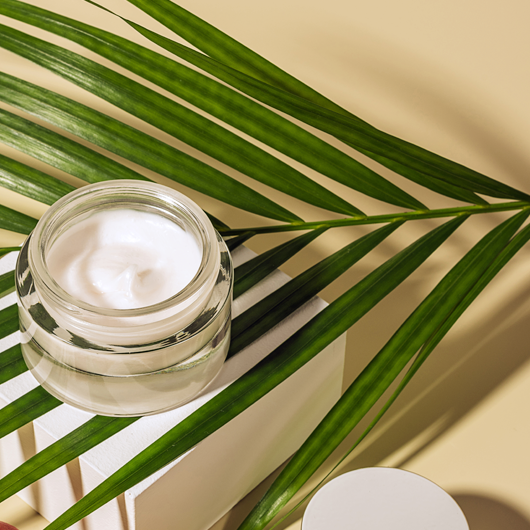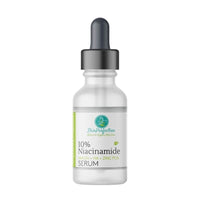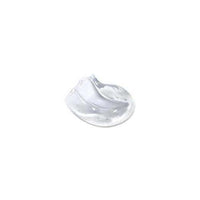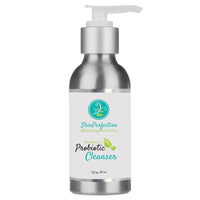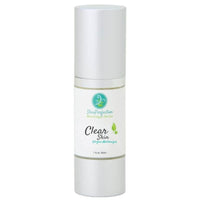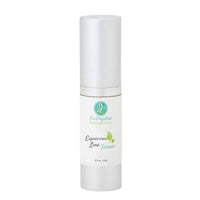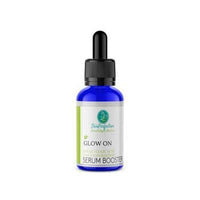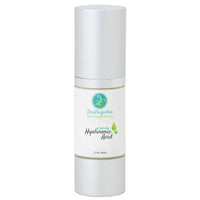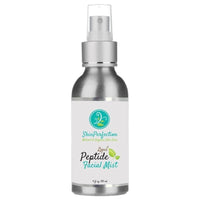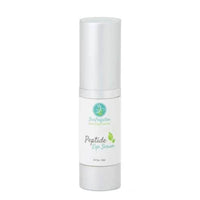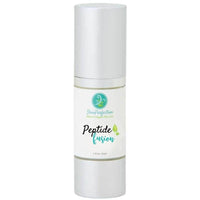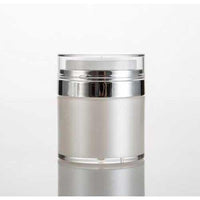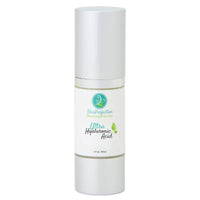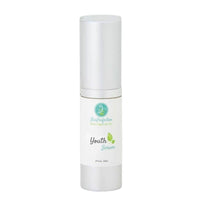Oily or Blemish-Prone
Oily or Blemish-Prone Complexions
Though oily and blemish-prone skin is most common in teenagers, it can be found throughout life. If you have ever experienced excessive oil on your face, you know it can be very frustrating. In the morning, everything looks under control.
But by 3 o'clock, though, your cheeks are shinier than a diamond from Tiffany's. Even as we age, a dry face can shift to oily skin. The amount of oil our skin produces is mainly based on hormones and environmental factors—women who live in humid climates naturally have too much oil.
Using the wrong products can lead to the over-production of oil. You can often get rid of the afternoon glow with powder or try to blot it away with oil-absorbing pads. While these are reasonable short-term solutions, more long-term solutions can help permanently alleviate oily skin.
Women with oily skin usually have larger pores than normal or dry skin. They also typically have a shiny complexion and are more prone to pimples, blackheads, and discoloration than women with other skin types.
Stress, adolescence, humidity, and heat can all contribute to oily skin. An overproduction of oil or sebum causes oily skin. This substance is designed to moisturize skin naturally, but if the skin cells cannot hold the moisture or produce more than necessary, the skin takes on an oily, dull appearance.
Even if it does occur immediately, it may develop through the day, popping through makeup and other measures that women take to curb the look of oily skin. In addition, an oily skin type may have another underlying cause: dry skin. So, if the body senses the skin is dry, it will produce more natural oil to moisturize it.
But if caustic acne medications or washes leach away this oil, the skin needs to be moisturized correctly and must produce more oil. This becomes a cycle until the skin has learned that it must make more oil than it ever needs to keep it hydrated.
Oily Skin Demystified: The Simple Lowdown
Ever felt like your face has that extra shine, especially when you didn't ask for it? You might be part of the oily skin club. Oily skin can sometimes feel like that friend who always overstays their welcome. But it's not all doom and gloom. Let's break down oily skin, its perks (yes, there are some!), challenges, and how to keep things in balance.
What's Oily Skin?
Think of your skin as a sponge. If it's holding onto a lot of water, it's moist. Similarly, our skin has these tiny factories called 'sebaceous glands' that produce oil. Oily skin means these factories are in overdrive, producing more oil than needed.
The Silver Lining of Oily Skin
- Natural Glow: While it might sometimes feel too shiny, oily skin can give you a natural radiance. You don't need highlighters when you've got that built-in glow!
- Delayed Wrinkles: Oily skin can be like a protective shield against wrinkles. The extra oil helps moisturize the skin, reducing the chances of early wrinkles.
The Challenges of Oily Skin
- Hello, Acne: Extra oil can clog pores, leading to acne and breakouts. It's like a traffic jam on your face where everything gets stuck.
- Makeup Slip 'n Slide: Ever felt like your makeup slides off your face? Oily skin can make it hard for makeup to stay put.
- That Midday Shine: Even if you start your day matte, you might notice a shiny forehead or nose by midday.
When Oily Skin Goes Haywire
Now, just like a seesaw, our skin likes balance. When it's out of whack, things can get chaotic. Stress, diet, weather, or even the wrong skincare products can send your skin's oil production into a frenzy. The result? Even oilier skin, more breakouts, and sometimes even redness or irritation.
Caring for Oily Skin: The Dos and Don'ts
- Cleanse Gently: You might think, "Let's get rid of all this oil!" But using harsh cleansers can strip your skin, making those oil factories produce even more oil. Instead, opt for a gentle, sulfate-free cleanser.
- Don't Skip the Moisturizer: It sounds counterintuitive, right? But moisturizing helps signal your skin that it doesn't need to produce more oil5. Go for oil-free or gel-based moisturizers.
- Say Yes to Sunscreen: No matter your skin type, sun protection is a must. For oily skin, matte or gel-based sunscreens can be a game-changer.
- Exfoliate Smartly: A gentle exfoliant can help unclog pores and reduce oiliness. But don't overdo it. Once a week is a good rule of thumb.
- Masks for the Win: Clay masks can be your best friend. They help soak up excess oil and give your skin a refresh.
- Watch Your Diet: Foods high in sugars or fats can sometimes increase oil production. Balance is key.
- Keep Hydrated: Hydrating from the inside is a must! Drink your water, which can help regulate oil on the outside.
In conclusion, while oily skin might sometimes feel like a challenge, with the right care, it can be managed. And remember, every skin type has its challenges and its perks. It's all about understanding and embracing what you've got.
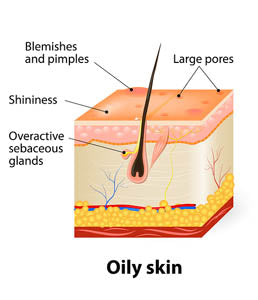
Hormones and the Skin
Oily skin is most common on the face, but it also manifests on the scalp and back, where acne may occur. When it appears on the scalp, women also face oily hair.
This skin type may occur at any age of life but is, of course, most common during adolescence and early adulthood; as the body is growing and changing and producing new and different hormones, which alter the body's natural chemistry, this may linger even after age twenty and continue for the rest of a woman's life, depending on her body and the climate in which she lives.
Oily skin is hard to address because it has an assortment of causes. For example, if the skin produces too much sebum or the cells cannot hold it, washing the face twice a day and replacing the oil with clean, fresh hydrators is necessary.
In this case, the skin is too dry. Again, you can train your skin to recognize the appropriate amount of oil through cleansing and moisturizing.
An age-defying anti-aging skincare routine for oily skin prone to acne or breakouts:
Morning:
Alpha Hydroxy Acid Probiotic Cleanser
Liquid Peptide Facial Mist
Peptide Eye Serum
Peptide Fusion or Expression Line Deep Wrinkle Serum & Youth Serum
Clear Skin Oil-free Moisturizer
Night:
Alpha Hydroxy Acid Probiotic Cleanser
Liquid Peptide Facial Mist
Peptide Eye Serum
Peptide Fusion or Expression Line Deep Wrinkle Serum & Youth Serum
Stem Cell & EGF Antioxidant Serum
Clear Skin Oil-free Moisturizer
One to two times a week:
Glow-On - may be used as a spot treatment.
Super Youth Mask
Specific Concerns
Click the link below to determine what products will work for specific skin concerns.
Crows Feet
Dark Circles
Dull Complexion
Expression Lines
Hyperpigmentation
Large Pores
Laugh Lines
Lip Lines
Sagging Neck and Jowl Areas
Under-eye Bags and Puffiness
Wrinkles
References:
Ebling, F. J. (2014). Sebaceous glands, acne, and related disorders: Basic and clinical research, clinical entities, and treatment. In Dermatology (Vol. 2). Elsevier.
Baumann, L. (2006). Skin aging and its treatment. The Journal of Pathology, 208(2), 241-251.
Pagnoni, A., Kligman, A. M., & Ebling, F. J. G. (2002). Determinants of acne. Journal of the American Academy of Dermatology, 49(1), 28-36.
Thiboutot, D. M. (2004). Regulation of human sebaceous glands. The Journal of Investigative Dermatology, 123(1), 1-12.
Rawlings, A. V. (2007). Trends in stratum corneum research and the management of dry skin conditions. International Journal of Cosmetic Science, 29(2), 75-82.
Saint‐Léger, D., Bague, A., Lévêque, J. L., & Cohen, E. (2007). A possible role for squalene in the pathogenesis of acne. British Journal of Dermatology, 116(5), 749-760.


